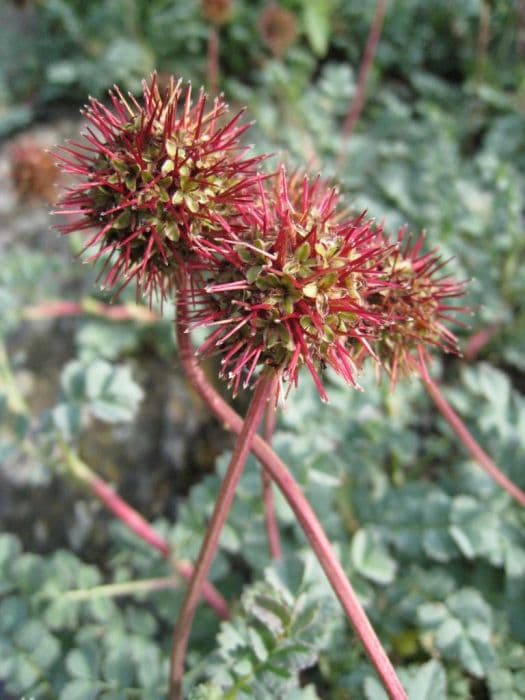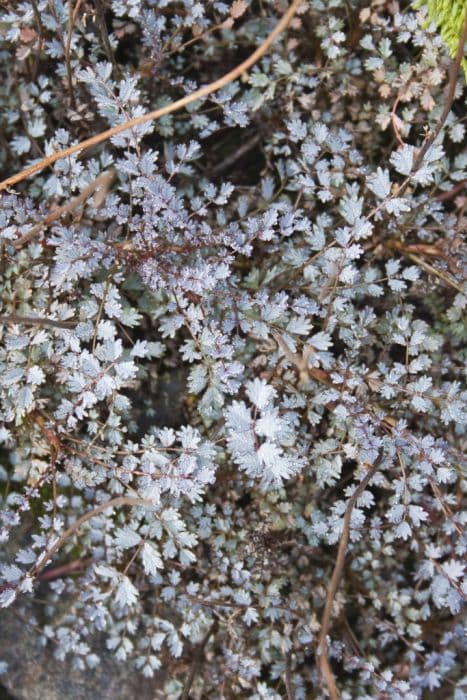Plum 'Early Rivers' Prunus domestica 'Early Rivers' (C)

ABOUT
'Early Rivers' is a small, rounded, dark blue plum, best for culinary use, cropping in late July. It is partially self-fertile, but crops much better with a partner; pollination group 3
About this plant
 Names
NamesFamily
Rosaceae.
Synonyms
Early Rivers Plum, Rivers' Early Plum, Early Rivers European Plum.
Common names
Prunus domestica subsp. domestica, Prunus communis.
 Characteristics
CharacteristicsLife cycle
Perennials
Foliage type
Deciduous
Color of leaves
Green
Flower color
White
Height
15 feet (4.57 meters)
Spread
15 feet (4.57 meters)
Plant type
Tree
Hardiness zones
5
Native area
Europe
Benefits
 General Benefits
General Benefits- Edible fruit production - The European plum provides sweet and juicy fruits that can be eaten fresh, used in cooking or preserved as jams and jellies.
- Ornamental value - With its attractive spring blossoms and pleasing growth habit, it serves as a decorative element in landscapes and gardens.
- Pollinator attraction - The blossoms attract bees and other pollinating insects, supporting the local ecosystem.
- Shade provision - As a medium-sized tree, it can offer shade and cooling properties to gardens and outdoor spaces.
- Economic value - The European plum has commercial importance for fruit production, playing a role in the agricultural industry.
- Habitat for wildlife - The tree can provide shelter and food for birds and other wildlife.
- Seasonal interest - It offers seasonal changes in appearance, from spring blossoms to summer fruits and autumn leaf coloration.
 Medical Properties
Medical Properties- This plant is not used for medical purposes.
 Air-purifying Qualities
Air-purifying QualitiesThis plant is not specifically known for air purifying qualities.
 Other Uses
Other Uses- Dye Production: The skins of Early Rivers plums can be used to produce a natural dye for fabric, yielding hues of pink, plum, or purple depending on the mordant used.
- Woodworking: The wood from plum trees is valued for its color and grain patterns, ideal for small specialty items like turned bowls, pen blanks, or inlay work.
- Smoke Flavoring: The wood chips or pruned branches of the plum tree can be used to add a sweet, fruity smoke flavor to meats during grilling or smoking.
- Floral Arrangements: The branches, especially when in bloom, are beautiful in floral arrangements and provide a natural and rustic charm.
- Bonsai Cultivation: Enthusiasts often use plum trees like Early Rivers for bonsai due to their attractive blooms and fruits, as well as the ability to withstand pruning.
- Leaf Shine: The leaves of the plum tree can be used to polish wood surfaces or leather, acting as a natural shine enhancer.
- Eco-Friendly Packing Material: Dried and ground plum pits can serve as a sustainable, biodegradable packing material alternative to synthetic foams or plastics.
- Natural Play-dough Colorant: The juice extracted from Early Rivers plums can be used to color homemade play-dough without relying on artificial dyes.
- Fruit Leather: Pureed plums can be dried into fruit leather, a healthy and portable snack with a long shelf life.
- Companion Planting: Early Rivers plum trees can be planted within gardens as they attract beneficial pollinators and may help with the pollination of other plants.
Interesting Facts
 Feng Shui
Feng ShuiThe European plum is not used in Feng Shui practice.
 Zodiac Sign Compitability
Zodiac Sign CompitabilityThe European plum is not used in astrology practice.
 Plant Symbolism
Plant Symbolism- Abundance - Prunus domestica, commonly known as the plum tree, often symbolizes abundance due to its prolific fruit production when in season.
- Renewal - The flowering of plum trees is a sign of spring, representing new beginnings and the renewal of life.
- Purity - In some cultures, the plum blossom is associated with purity and innocence because of its delicate and clean appearance.
- Endurance and Strength - The plum tree is known for its hardy nature, able to survive in harsh conditions, it represents resilience and the strength to endure adversity.
- Fortune - Blossoming plum trees are often linked to good luck and fortune, particularly in East Asian cultures.
- Beauty - The flowers of the plum tree are highly esteemed for their beauty, thus the plant is frequently a symbol of natural beauty and grace.
 Water
WaterThe Early Rivers plum should be watered deeply, allowing the soil to become moist but not soggy. During the growing season, water the tree once a week with about 2 gallons per watering for young trees, increasing to 4 to 6 gallons for mature trees. Reduce frequency in cooler months but don't let the soil dry out completely. Watering should be adjusted based on rainfall, with less water given during periods of heavy rain and more during dry spells.
 Light
LightEarly Rivers plum trees thrive in full sun. They require at least 6 hours of direct sunlight per day to produce the best fruit and to maintain overall health. A spot that receives unfiltered sunlight throughout the day is ideal for this fruit tree, enhancing both growth and fruit production.
 Temperature
TemperatureEarly Rivers plum trees perform best in a temperate climate with winter chill. They can tolerate a minimum temperature of 15°F and a maximum of around 95°F. The ideal temperature range for optimal growth is between 65°F and 75°F. Slight variations won't harm the tree, but prolonged exposure to extremes beyond these temperatures may.
 Pruning
PruningPruning is essential for the Early Rivers plum to maintain its shape, remove dead or diseased wood, and encourage fruit production. Prune in late winter or early spring before new growth starts, aiming to open the canopy for light and air circulation. Pruning should be performed annually, focusing on thinning out overcrowded branches and cutting back limbs that have fruited heavily the previous season.
 Cleaning
CleaningAs needed
 Soil
SoilThe best soil mix for the European Plum 'Early Rivers' should be rich in organic matter, well-draining, and with a pH of 5.5 to 6.5.
 Repotting
RepottingEuropean Plum 'Early Rivers' is a fruit tree and typically does not require repotting as it is usually planted directly in the ground.
 Humidity & Misting
Humidity & MistingEuropean Plum 'Early Rivers' tolerates a wide range of humidity levels but prefers normal outdoor conditions.
 Suitable locations
Suitable locationsIndoor
Not suitable for indoor growth; needs outdoor conditions.
Outdoor
Plant in full sun, well-drained soil, and space trees 15-20 feet apart.
Hardiness zone
5-9 USDA
 Life cycle
Life cycleThe common name for Prunus domestica 'Early Rivers' is the Early Rivers Plum. Its life cycle begins with germination, where the stone (seed) is planted and sprouts in favorable conditions of soil, temperature, and sunlight. Following germination, the seedling grows into a young tree during the vegetative stage, establishing a root system and foliage. This phase can last several years until the tree reaches maturity and begins to flower, usually heralding the onset of the reproductive stage. The flowers are pollinated by insects, leading to fruit development; the Early Rivers Plum is known for its early-ripening plums which can be harvested in the summer. After fruiting, the tree enters a period of dormancy in winter, and the cycle resumes with new growth in the spring.
 Propogation
PropogationPropogation time
Spring-Early Summer
The European plum 'Early Rivers' is commonly propagated by grafting, which is often done during the dormant season, usually in late winter or early spring. The most popular method for this cultivar involves taking a scion, which is a piece of a young stem with buds, from the 'Early Rivers' plum and grafting it onto a compatible rootstock, which could be another Prunus species more suited to local soil conditions and climate. The scion should have at least two or three buds and be about 4 to 6 inches (10 to 15 centimeters) long. The rootstock and scion are carefully joined together through methods like whip grafting, cleft grafting or bud grafting, ensuring a snug fit to promote successful union. The site of grafting is then sealed with grafting wax or tape to prevent desiccation and infection. The graft should then be looked after carefully, keeping the plant well-watered to ensure the best chance of successful propagation.









